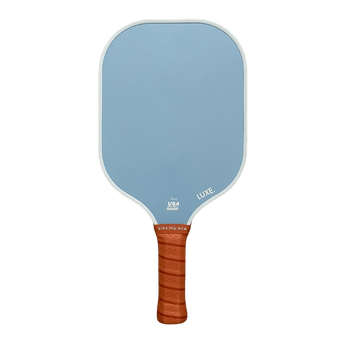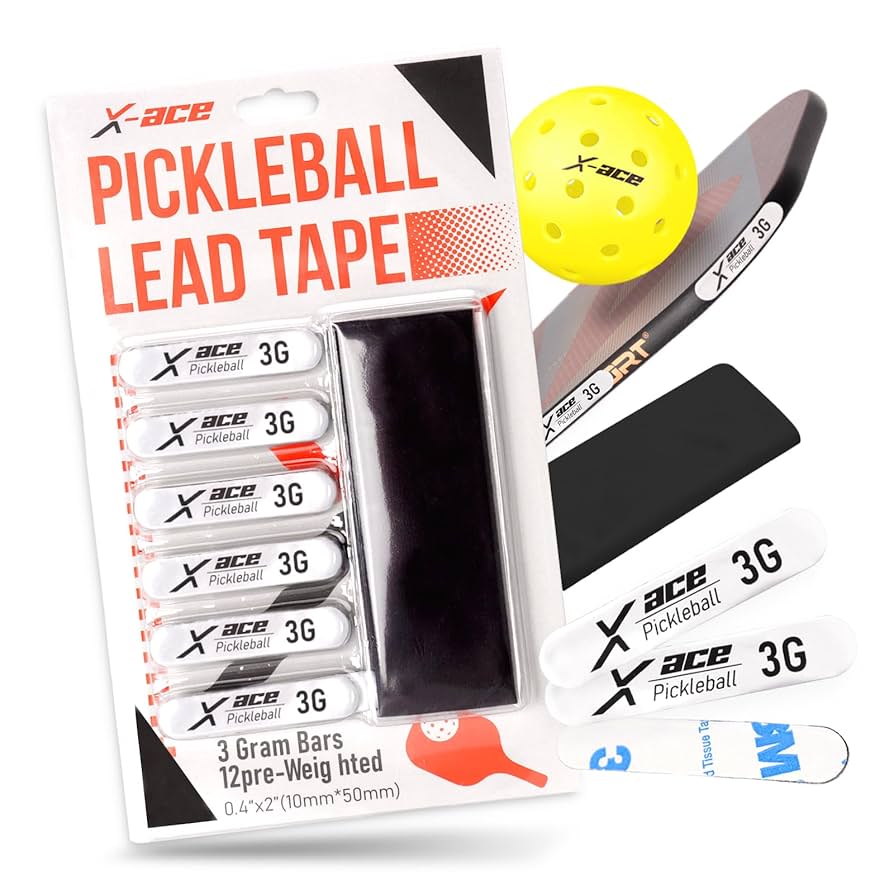Have you ever wondered what it means to score an ace in pickleball? If you want to boost your game and impress your opponents, understanding this key move is a must.
An ace can turn the tide of a match in your favor, giving you that thrilling edge. You’ll discover exactly what an ace is, why it matters, and how you can start serving aces yourself. Keep reading, because mastering this skill could be the game-changer you’ve been looking for.

Credit: luxepickleball.com
Ace In Pickleball
An ace is a special shot in pickleball. It happens when a player serves the ball and the opponent cannot touch it.
Aces help players score points quickly and gain an advantage in the match.
Definition And Basics
An ace is a serve that lands in the correct area and is not returned by the opponent. It scores a point immediately.
To get an ace, the ball must pass over the net and stay inside the service court. The opponent must fail to hit it back.
- The serve must be legal and in-bounds.
- The opponent does not touch the ball.
- An ace ends the rally right away.
Why Aces Matter
Aces help players win points fast. They can change the flow of the match by giving an early lead.
Scoring aces also puts pressure on the opponent. It can make them nervous and cause mistakes.
- Aces save energy by ending points quickly.
- They boost a player’s confidence.
- Aces can disrupt the opponent’s rhythm.

Credit: www.acepickleballclub.com
Techniques To Hit An Ace
An ace in pickleball is a serve that the opponent cannot return. Hitting an ace takes skill and practice. You must use good techniques to serve the ball fast and accurate.
This guide explains serving styles, placement strategies, and the balance between power and precision. These tips help improve your chances of scoring an ace.
Serving Styles
Different serving styles affect how the ball moves and how hard it is to return. You can try flat serves, topspin serves, or slice serves. Each style has its own benefits.
A flat serve is fast and direct. A topspin serve makes the ball dip quickly. A slice serve makes the ball curve to the side. Change your style to confuse your opponent.
- Flat serve: fast and straight
- Topspin serve: drops sharply
- Slice serve: curves sideways
Placement Strategies
Where you place the serve is very important. Aim for spots that are hard for your opponent to reach. Corners and sidelines are good targets.
Try to serve low and close to the net line. This makes it harder for your opponent to hit the ball back well. Mixing up your placement keeps them guessing.
- Target corners and sidelines
- Serve low near the net
- Vary your serve placement often
Power Vs. Precision
Power means hitting the serve hard. Precision means placing the serve exactly where you want. Both are important for an ace.
Too much power can make you miss the target. Too much precision without speed makes it easier to return. Find the right balance to serve well.
- Use enough power to challenge your opponent
- Focus on accurate placement
- Practice to balance speed and control
Common Ace Shots
An ace in pickleball is a serve that the opponent cannot return. It wins the point immediately.
There are several types of ace shots. Each uses a different style to surprise the opponent.
Drive Serve
The drive serve is a fast and straight serve. It aims to hit the service box hard.
This serve is hard to react to because of its speed and low bounce. Players often use it to score aces.
Spin Serve
The spin serve adds rotation to the ball. This makes the ball curve or bounce oddly.
Spin serves can confuse opponents. The ball may drop quickly or move sideways after bouncing.
- Topspin: Ball jumps forward after bounce
- Backspin: Ball slows down or stops
- Sidespin: Ball curves left or right
Slice Serve
The slice serve cuts the ball from the side. It makes the ball spin sideways.
This serve causes the ball to skid or bounce low. It can catch the opponent off guard.
Training For Aces
An ace in pickleball is a serve that the opponent cannot touch. Training to hit aces helps improve your serve and score points fast.
Focused practice can increase your chances of making aces. Use drills, build consistency, and sharpen your mental focus to serve better.
Drills To Improve Accuracy
Accuracy is key to serving aces. Try drills that target specific spots on the court to practice hitting your serve exactly where you want.
Mark targets on the opposite service box. Aim your serve to land on these spots during practice. This will train your hand-eye coordination.
- Use cones or tape to create small target areas
- Practice serving to each target multiple times
- Track your success rate and try to improve
Building Consistency
Consistency helps you serve aces regularly. Work on your serve motion to keep it smooth and repeatable every time.
Practice your serve at the same speed and angle. Use a rhythm that feels natural and easy to repeat during matches.
- Warm up with slow, controlled serves
- Gradually increase speed while keeping form
- Record practice sessions to check your technique
Mental Focus Tips
Mental focus helps you serve aces under pressure. Stay calm and keep your mind on your target during each serve.
Visualize the ball landing exactly where you want. Take deep breaths before serving to clear your mind and reduce stress.
- Set a clear goal for each serve
- Use positive self-talk to boost confidence
- Focus only on the serve, not the score
Ace Strategies In Matches
An ace in pickleball is a serve that the opponent cannot touch. It scores a point immediately. Using ace strategies can give you an edge during matches.
Good ace strategies involve observing your opponent, timing your serve, and using aces to shift the match momentum.
Reading Opponents
Watch your opponent’s position and movement before serving. Notice their weaknesses or slow reactions. This helps you decide where to serve.
Look for signs like their paddle height and stance. These clues tell you if they are ready or vulnerable to a fast serve.
- Observe their foot placement
- Note paddle angle and position
- Spot hesitation or slow steps
Timing Your Serve
Serve when your opponent is least prepared. Timing can make your serve harder to return. This increases chances of an ace.
Try to serve quickly after your opponent moves away from the ideal position. Avoid predictable serving patterns.
- Serve right after your opponent shifts
- Vary your serve speed and direction
- Use short pauses to confuse your opponent
Using Aces To Gain Momentum
Scoring an ace boosts your confidence and puts pressure on your opponent. Use this to raise your game during the match.
After an ace, stay focused and keep up the pace. This can create a winning streak and control the match flow.
- Celebrate small wins calmly
- Keep serving with confidence
- Use momentum to play aggressive shots
Rules Impacting Aces
An ace in pickleball happens when the serve lands in the proper area and the opponent cannot touch the ball. The rules about serving and faults affect how aces occur.
Understanding these rules helps players know what counts as an ace and what does not. Some faults or special calls can change the outcome.
Service Faults
A service fault happens when the serve breaks a rule. It stops the chance of an ace on that serve. Some common faults include:
- Serving out of the correct court area
- Hitting the ball into the net or out of bounds
- Not hitting the ball underhand
- Stepping into the non-volley zone while serving
If a fault happens, the serve does not count. The server may get a second chance or lose the serve, so no ace is possible on a fault serve.
Let Serves
A let serve occurs when the ball touches the net but still lands in the correct service box. The serve is replayed without penalty.
Let serves do not count as aces because the serve is not complete. The player must serve again until a valid serve happens.
Scoring With Aces
An ace awards a point to the server. The opponent fails to hit the ball back, so the server scores immediately.
Only correct serves that land in the service box without faults or lets can be aces. Aces speed up the scoring and give the server an advantage.
- Ace = point for server
- Faulted serve = no ace, no point
- Let serve = replay serve, no ace

Credit: www.amazon.ca
Frequently Asked Questions
What Is An Ace In Pickleball?
An ace in pickleball is a serve that the opponent fails to touch or return. It results in an immediate point for the server. A well-placed serve can often catch the opponent off guard, leading to an ace. Achieving an ace requires precision and strategy.
How Does A Pickleball Ace Differ From Tennis?
In pickleball, an ace occurs when the serve is untouched or unreturned. Similar to tennis, it results in an immediate point. However, pickleball’s smaller court and underhand serves make aces less frequent than in tennis. The emphasis is on placement and spin rather than power.
Can Beginners Achieve Aces In Pickleball?
Yes, beginners can achieve aces in pickleball with practice and strategy. Focusing on serve placement and spin can catch opponents off guard. While power is less crucial, understanding opponents’ weaknesses can increase the chance of an ace. Regular practice helps beginners improve their serve accuracy.
Why Are Aces Important In Pickleball?
Aces are important in pickleball as they provide immediate points and disrupt opponents’ rhythm. They demonstrate effective serving skills, giving the server an advantage. Achieving aces can boost confidence and momentum. Focusing on serve strategy can increase the likelihood of scoring aces in matches.
Conclusion
An ace in pickleball is a strong, fast serve that the opponent cannot return. It scores a point immediately. A good ace shows skill and control. Players try to serve aces to gain advantage. Practice helps improve your serve accuracy and speed.
Remember, a simple, well-placed serve can win points. Understanding aces makes the game more fun to play. Keep practicing and watch your pickleball skills grow.


https://shorturl.fm/HlmfF
https://shorturl.fm/q3SDr
https://shorturl.fm/64zRU
https://shorturl.fm/nkdpF
https://shorturl.fm/HYm9M